
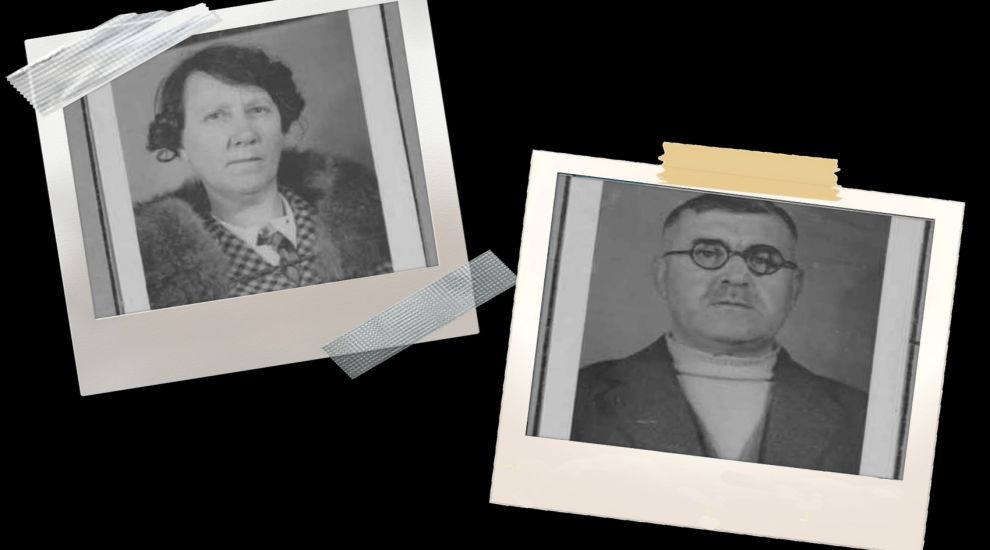

From a cosy retirement home to a German radio station during the Occupation... Jersey Archive has uncovered the rich history behind a property above St Peter’s Valley.
‘Your Home, Your Story’ is a series of free talks at Jersey Archive that focuses on individual properties nominated by islanders wanting to know more about their home and the area they live in.
As part of the next upcoming talk at the Jersey Archive this weekend, Senior Archivist Stuart Nicolle has shared part of his research on ‘Fairlight’, a property on Les Gellettes in St Lawrence, above St Peter’s Valley.
Unlike some of the other homes Jersey Archive will be looking at this year, it dates from relatively modern times but its story is fascinating nonetheless.
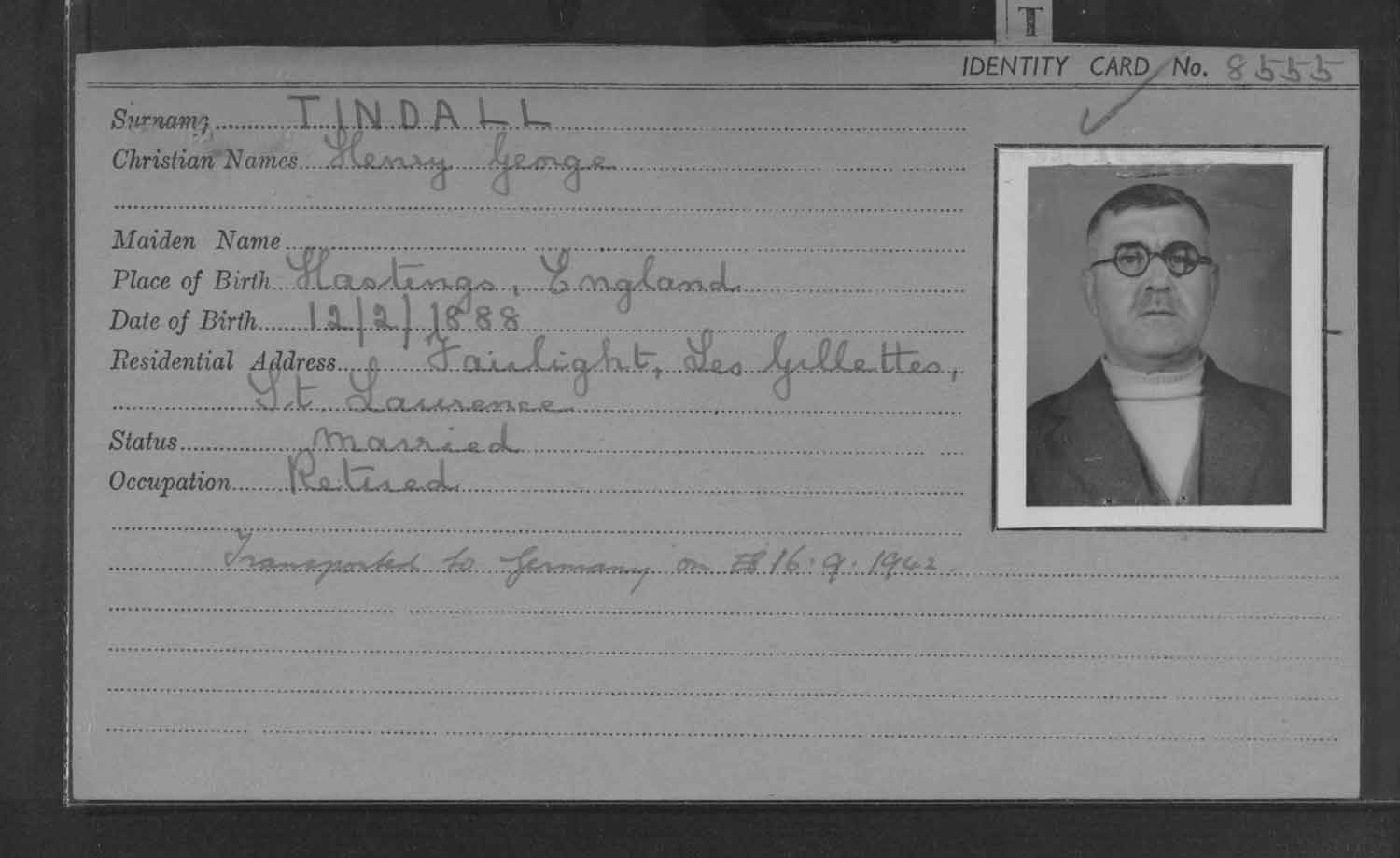
Pictured: Henry Tindall Occupation Registration card. (Jersey Heritage)
On 13 November 1937, Henry George Tindall, son of Henry, bought land measuring one vergee, 25 perches and 17 ft from John Gibaut, son of Elie. The cost was £170.
It was here that 'Fairlight' was to be built.
Records indicate that Tindall and his wife, Maud Alice, née Deacon, must have set to work more or less straightaway; the 1938 rates books show him as being in-situ, with the property named 'Fairlight' from its inception.
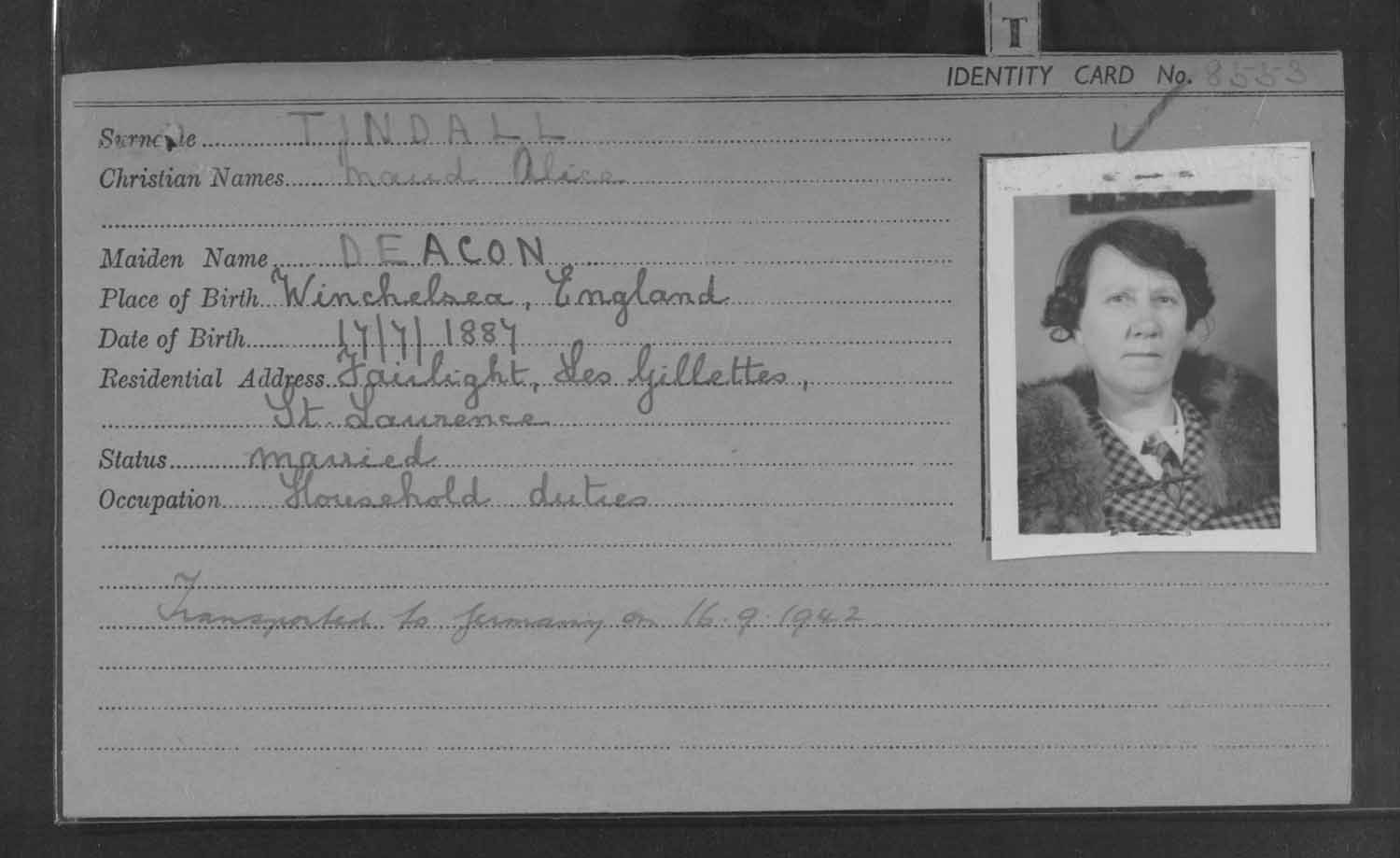
Pictured: Maud Tindall Occupation Registration card. (Jersey Heritage)
Originally from England, Henry George had been baptised at Ore Christ Church in Hastings on 29 April 1888.
His wife, Maud, was the child of Alfred and Eliza Deacon and was baptised barely five miles away in Icklesham on 2 August 1885, although there is a disparity with her Occupation Registration Card, which states that she was born on 17 July 1887.
Looking at this area of Hastings where they met and grew up, there is a small town on the coast called Fairlight, undoubtedly the inspiration for the name of their house in Jersey.
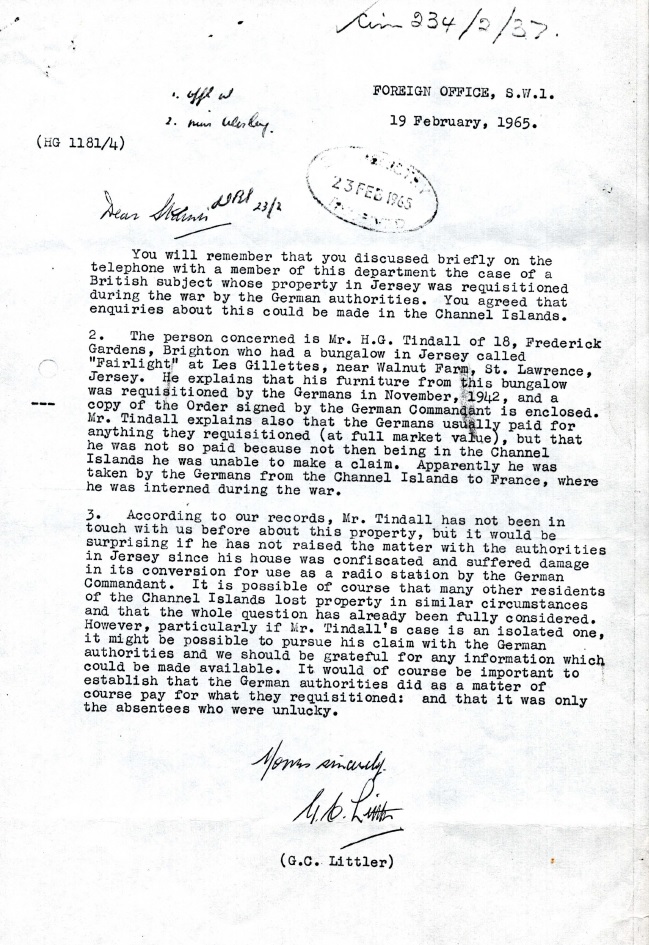
Pictured: Henry Tindall's letter re compensation Bailiff's Liberation files. (Jersey Heritage)
Henry's Occupation Registration Card reveals that he served in the military. His service records show that he signed up for duty at the age of just 18 years and four months old. His profession was listed at that point as a grocer.
His certificate of medical examination is dated 13 August 1904 in Chichester. He specified on his form that he wanted to join the Royal Garrison Artillery and he got his wish, passing his primary military examination the day before on 12 August.
He is listed as being a part of the 72nd (Heavy) Battery Royal Garrison Artillery until he retired from the army in February 1912. He was initially posted to Ireland before being transferred to India.

Pictured: Maud Tindall application to return to Jersey in 1945. (Jersey Heritage)
Military service may have been hard, with Henry suffering in 1907 from a tapeworm and the following year with malaria and then in 1909 with enteric fever, more commonly known as typhoid, for which he was hospitalised for 68 days.
In the 1911 census, he can be seen serving in the military in India as a bombardier. His profession was listed as a grocer. His unit was based in Nowgong at the time.
Soon after Henry and Maud were married at the Parish Church of Hastings All Souls, Clive Vale on 25 April 1912, suggesting his decision to retire from the Army was for love.
His service records mention that he wanted to apply to be a Police Constable, with notes on the form that his conduct whilst in service was "exemplary, a thoroughly reliable man".
His qualifications for becoming a policeman were that he was a "good horseman, fine physique, first aid course", and he was successful in this venture.
However, when he left the Army he was placed on the Army Reserve list. He was mobilised once more at Newhaven in August 1914, serving for the duration of the First World War in the Royal Army Service Corps.
Before the War, the Tindalls had settled in Brighton and remained there until they decided to move to Jersey. Unfortunately, their quiet retirement did not last long and was interrupted by the German Occupation.
'Fairlight' appears within the list of properties requisitioned by the German Forces. There's a note in the Law Officers' Department records that on 24 October 1941, one room in the property belonging to Henry was taken over by the German authorities. The room was listed as being derequisitioned on 2 January 1942.
Things did not stay calm for the couple for long. Having been born in England and served in the military, Henry was always in danger of being on the list of deportees.
Sure enough, he and Maud received a letter in September 1942 and a note on their Occupation cards mentions that they were “transported to Germany on 16/09/1942”.
The couple ended up in Bad Wurzach, far away from their retirement home in St Lawrence.
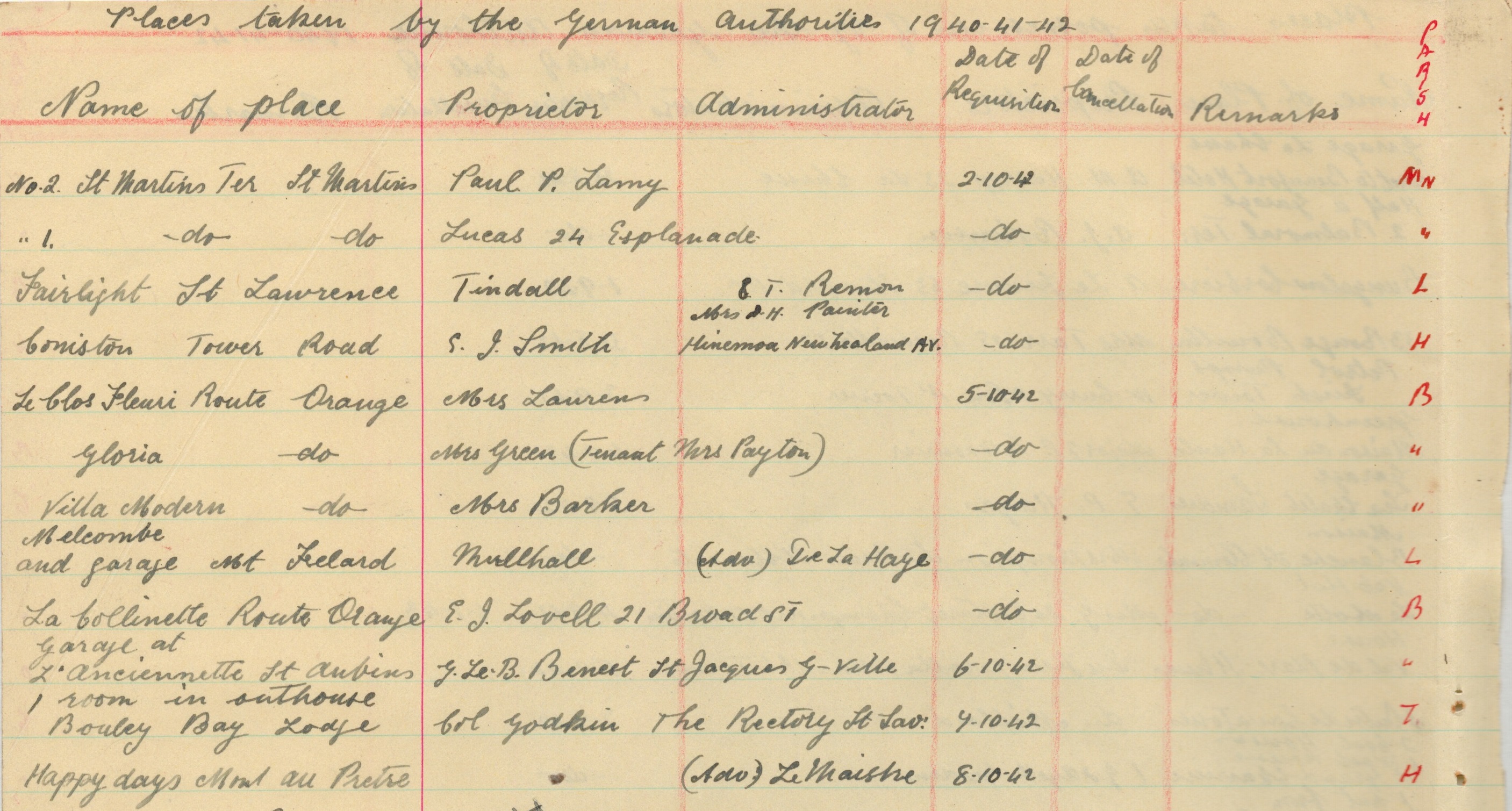
Pictured: Record showing requisition of Fairlight by German forces. (Jersey Heritage)
After they had left the island, the Germans wasted no time in taking over the property once more.
A requisition order was issued for ‘Fairlight’ on 2 October 1942, barely two weeks later.
Les Gellettes was a busy area during the Occupation, with a battery overseen by the Luftwaffe in the woods behind it and consisting of six 88mm and three 20mm anti-aircraft guns.
Correspondence from the 1960s, and held within the Bailiff’s Liberation files, gives more detail.
By this time, Henry, who was back living in Brighton, was writing to the UK Government to try and claim compensation for the items he lost during the Occupation.
The letters reveal that his property was converted for use as a radio station by the German Commandant.
When the Tindalls were liberated from Germany and returned to the UK, they made an application to return to the island, dated 12 June 1945.
They appear in the parish rates book for 1946, paying both owner and occupier’s rates, but if they were in Jersey, their return was short-lived as they sold their property to Francis Poignand Romeril on 25 May 1946.
Henry eventually died in Brighton on 11 April 1970.
This article only touches on some of the research into Ville au Bas, Les Gellettes and Charrieres Malorey in St Lawrence for the 'Your Home, Your Story' (YHYS) series, sponsored by Antony Gibb Historic Buildings Consultants.
If you would like to hear more stories, Jersey Archive is hosting a free talk this Saturday 16 March at 10:00.
To book a place for the talk, call 833300 or email archives@jerseyheritage.org.
The Archive will also be open from 09:00-13:00 for general research.
You can also uncover more stories by searching Jersey Archive's online catalogue here.
Comments
Comments on this story express the views of the commentator only, not Bailiwick Publishing. We are unable to guarantee the accuracy of any of those comments.